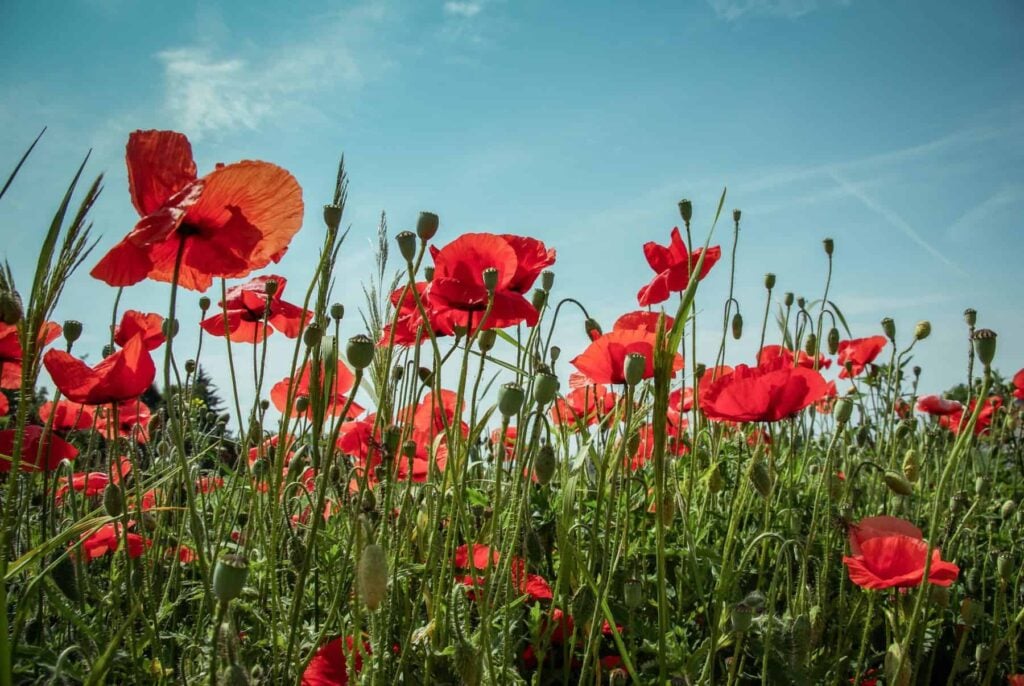Poppies have been a symbol of sleep, death, and peace. This flower grows practically anywhere. They easily adapt to different climates whether in cold or hot places. They also vary in height from less than an inch to even over 20 feet tall. But why did the poppy flower become a symbol of World War I?
Poppy flowers were identified as a symbol of World War I after a Canadian poet, John McCrae, noticed a field of poppies near a mass grave, Flanders Fields, in Belgium, soon after World War I.
How Did Poppies Get Noticed In World War I?
Continuing in John McCrae’s journey in World War I as a brigade surgeon, he was assigned to be stationed in the trenches near Ypres, Belgium, more known as Flanders.
McCrae’s friend, Lieutenant Alexis Helmer, 22, was killed during the tragic, bloody Second Battle of Ypres and was buried in a mass grave. Day after Helmer was buried in the makeshift mass grave, McCrae noticed the graves were blooming with poppies.
McCrae wrote a poem in memory of the lives offered and of his dear friend and included the poppy flowers he found blooming beautifully on their graves called Flanders Fields. This was the second to the last poem McCrae had written and was published in England’s Punch magazine in December 1915. (Source: Poets.Org)
Who was John McCrae?
John McCrae was born on November 30, 1872, in Guelph, Ontario, Canada. McCrae was a Canadian doctor, soldier, author, and poet.
McCrae showed interest in poetry at a young age while a student at Guelph Collegiate Institute. At the same time as demonstrating his intention to join the military, he joined the Highfield Cadet Corps.
After graduating from Guelph Collegiate Institute at the age of sixteen, he got a scholarship to the University of Toronto, studied there for three years, and was forced to take a year of absence due to his severe asthma, which impacted him for the rest of his life.
Before returning to the University of Ontario in 1893, McCrae taught English and mathematics at the Ontario Agricultural College in Guelph.
In 1898, McCrae obtained his bachelor’s degree in medicine and continued to pursue his passion for writing poetry, where sixteen poems and a few short stories he wrote were published in several magazines. (Source: Poets.Org)
When Did McCrae Formally Join the Military?
It was October 1899, the beginning of the South African War, when McCrae felt the need to serve his nation by joining the armed forces. McCrae stayed in South Africa for only a year and soon resigned from the service.
After McCrae resigned from service, he went back to the medical field, starting his research in pathology and working as a resident assistant pathologist at Montreal General Hospital. McCrae moved to London in 1904 to continue his medical studies and career.
Returning to the military force in World War I that happened in 1914 and being a member of the British Empire, Canada got involved in the battle where McCrae was appointed as a brigade surgeon to the First Brigade of the Canadian Field Artillery. (Source: Poets.Org)
What is Remembrance Day?
Originally known as Armistice Day to commemorate those millions of soldiers who protected their nation and the civilians who offered their lives in World War I. It was after World War II when the government of Australia agreed to the proposal of the United Kingdom to rename Armistice Day to Remembrance Day.
Remembrance Day is celebrated on the 11th hour on the 11th day of the 11th month of every year. The people celebrating this day offer a moment of silence to observe and dedicate to World War I brave souls. (Source: Army)
